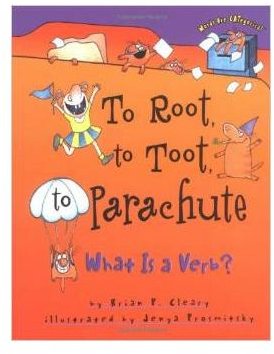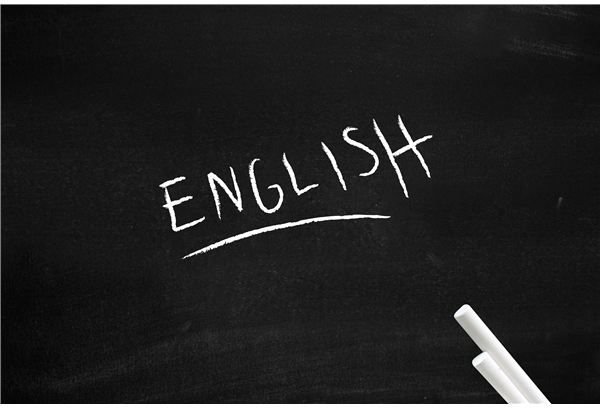Preschool Verb Lesson: Teach Preschool or Kindergarten Students About Verbs With Downloads
Prior Knowledge About Basic Parts of Speech
Although explicit grammar instruction will not begin for most students until elementary school, preschoolers can begin to learn about
the most basic parts of speech, or grammatical forms, which will form a strong foundation for future grammar study. This lesson plan outlines activities to teach preschool students that verbs are words that show actions and states of being.
The teacher introduces the topic of verbs to the preschoolers by discussing the following questions and points with the entire class:
- Do you know what a verb is?
- Do you know what an action is?
- Do you know what a state of being is?
- Name something you do.
- Name something you are.
Most preschoolers will probably answer no to the first question, may or may not know the answers to the second and third questions, and should be able to talk about the fourth and fifth points. The students must have prior knowledge about the concept of doing things (actions) and being things (states of being). For example, a preschool aged boy should be able to say that he plays with his toys and that he is a boy. If the students do not understand the last two points, then the teacher should review the ideas of doing things versus being things.
Reading

After the introductory discussion, the teacher can read a book about verbs to the preschool students. The book, To Root to Toot to Parachute: What Is a Verb? by Brian P. Cleary introduces young children to verbs as words that show action or being. Preschoolers will love the silly rhymes in the book including “So are holler, help, and hold. Whack and stack and pack and fold. Fix and finish, load and lift. Hurry, scurry, shake, and sift.” The illustrations of a pack of silly cats doing and being things will help the children associate verb words with actions and states.
Verb Sorting Activity
The Verb Sorting, or “Is It an Action or State of Being,” activity helps preschoolers learn to categorize verbs as actions and states of being. The children will learn to place known verbs into two categories. The materials needed for this preschool activity are:
- Verb photo flashcards
- Two baskets
The verb flashcards should have both images and writing of preschool vocabulary words. Some printable sample flashcards are available for download right now by clicking Preschool Verb Photo Flashcards: Action Verbs (Part 1), Preschool Verb Photo Flashcards: Action Verbs (Part 2), and Preschool Verb Flashcards: State of Being Verbs. The students can also make their own verb flashcards by coloring their own pictures or by cutting pictures out of magazines and gluing the images onto large index cards. The teacher should then write the verb on the flashcard under the picture. The teacher should also label each of the baskets—one as action and one as state of being—prior to doing the activity in class.
To play the Verb Sorting activity, the teacher should first place the two baskets on a table in front of the preschoolers and then explain the labels to the students. The teacher will then hold a verb flashcard up and ask the class, “Is it an action or state of being?” For example, if the teacher selects the be card, the students should answer, “Be is a state of being.” After the student correctly identifies the type of verb, the teacher should place the flashcard in the corresponding basket.
Optional: If the preschool students solidly understand the difference between action verbs and state of being verbs, the teacher can also introduce the handful of verbs that can show both action and state of being: appear, feel, get, grow, look, prove, remain, smell, sound, stay, taste, and turn. For example, the verb smell is an action verb in The boy smelled the cookies but is a state of being verb in The cookies smell delicious. In the first sentence, the boy is doing something (smelling the cookies). In the second sentence, the cookies are being something (delicious). To add this third category of verbs to the activity, simply create additional verb flashcards and label a third basket.
Simon Says Verbs
The Simon Says Verbs game is another fun verb activity that will help preschoolers both identify verbs from other parts of speech and distinguish action verbs from state of being verbs. The students will also get some healthy exercise while playing this game.
Have the children all stand up in an area large enough for each child to move around safely such as in the school gym or outside on the playground. The teacher will stand in front of the class and say, “Simon says…” followed by a verb. The students should then do or be what Simon said. For example, if the teacher says, “Simon says dance,” then all the preschoolers should dance. If the teacher says, “Simon says be excited,” then the students should be excited. The teacher can also include some words that are not verbs. For example, if the teacher says, “Simon says table,” the students should stop moving because table is a noun, not a verb.
Optional: Instead of the teacher making all the commands, individual students can take turns playing Simon. Each preschooler should get a change to stand at the front of the class and say, “Simon says.”
Assessment
At the end of the verb lesson, the teacher should review what the students learned by asking the following questions:
- What is a verb?
- What is an action? Name an action.
- What is a state of being? Name a state of being.
The preschoolers should be able to correctly answer all three questions after reading the verb book To Root to Toot to Parachute: What Is a Verb? by Brian P. Cleary and after playing the Verb Sorting and Simon Says Verbs activities. By learning about verbs as actions and states of being at an early age, preschoolers will be better prepared for more in-depth grammar education in elementary school and beyond.
Sources
- All ideas courtesy of the author, Heather Marie Kosur
This post is part of the series: Teaching Grammar: Preschool Lesson Plans
Preschoolers can develop a strong foundation for future grammar study by learning the basics about the parts of speech. This series of pre-K lesson plans suggests books, discussion questions, and activities for preparing students for later grammar education.
